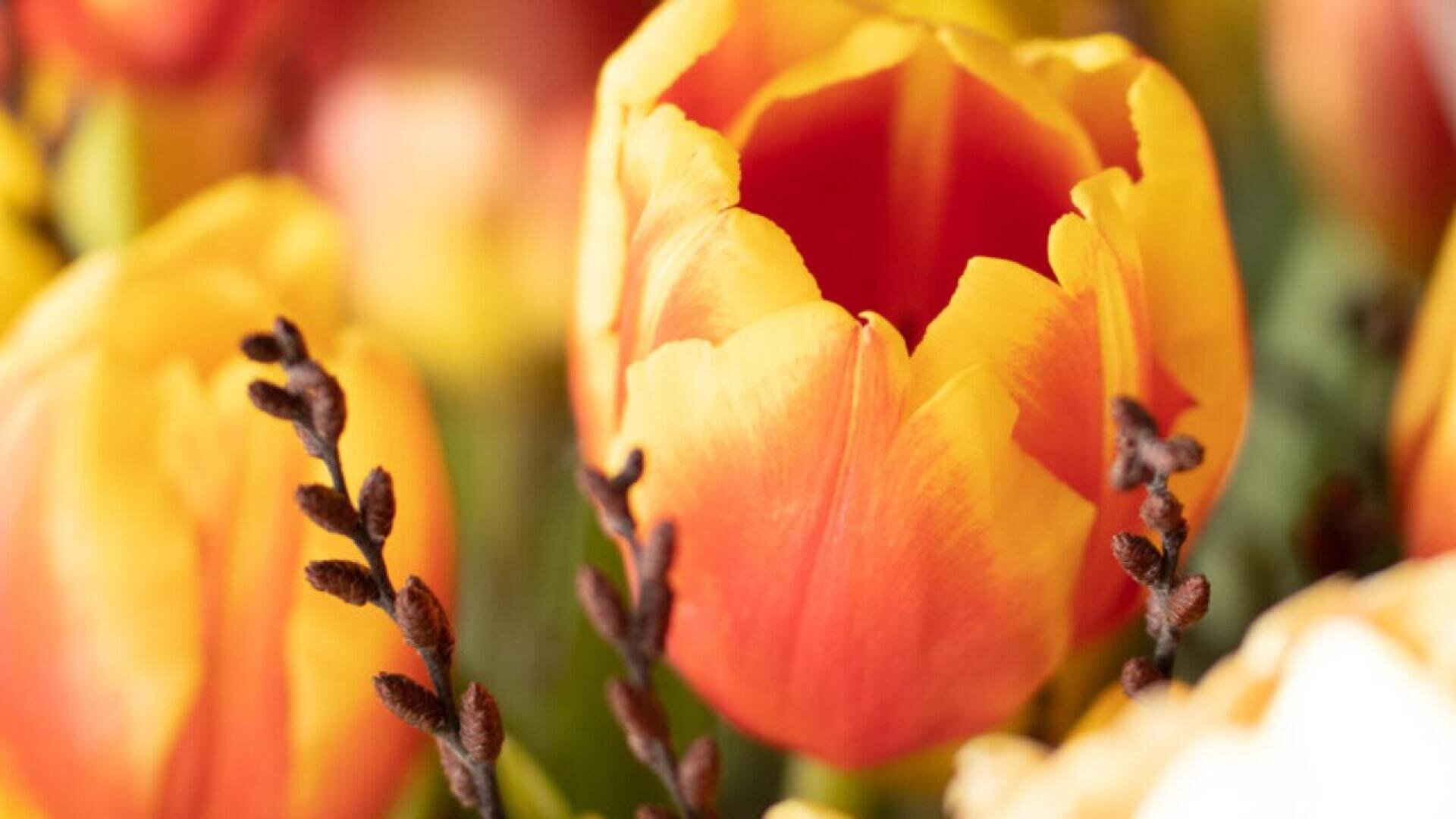The Colorful Diversity of Tulips
The fascinating history and symbolism of tulips date back to the 16th century. Today, they are an indispensable part of gardens and floral arrangements worldwide, especially cherished in floristry for their diverse colors and forms.
Historical Roots
Tulips originally hail from the temperate regions of Eurasia, especially Turkey and Central Asia. They were first introduced to Europe in the 16th century and quickly gained popularity. The 17th century saw a veritable tulip mania in the Netherlands, where tulip bulbs were traded at exorbitant prices. Today, tulips are an integral part of gardens and floral arrangements worldwide. In floristry, they are particularly valued for their diverse colors and forms.
More Than Just Beauty
But tulips are not just popular for their beauty; they are also symbolically significant. They often represent perfect love and are, therefore, a favored gift for special occasions. For example, red tulips symbolize deep love, while yellow tulips stand for cheerful thoughts and sunshine. White tulips represent forgiveness or unconditional love. Because of these varied meanings, tulips are a popular gift for Valentine's Day, Mother's Day, or simply as a token of affection.
Passion
Rutishauser AG is dedicated to cultivating this very special flower. In their own nursery in Züberwangen, the premium tulips thrive using the latest cultivation techniques. They benefit from an innovative water culture system that avoids the use of soil, making it more environmentally friendly. The use of vertical farming maximizes production efficiency. The Swiss tulips carry the Suisse-Garantie label, distinguishing them for their extraordinary quality and sustainability.
Care Tips for Long-Lasting Freshness
To keep tulips fresh and beautiful, they should be placed in a vase with clean, cold water. Ensure that the lower leaves are not submerged in water, as this can promote bacterial growth. Tulips prefer cool temperatures and bright, indirect light. Avoid placing them near ripening fruit, as the ethylene gas released by the fruit can damage the blooms. Cut the stems of your tulips and remove any leaves that might submerge in water. Cut them straight across, as this slows their growth and helps them last longer. Regularly change the water and recut the stems. Typically, tulips last about a week in a vase.
One effective method to extend the lifespan of tulips is to place them in a cool location overnight. This process helps the tulips close their petals and slow down their metabolism, thereby extending the life of the flowers. This method is particularly useful as tulips continue to grow after cutting and tend to turn towards the light. Storing them in a cool place at night can slow this process and keep the flowers fresh.



